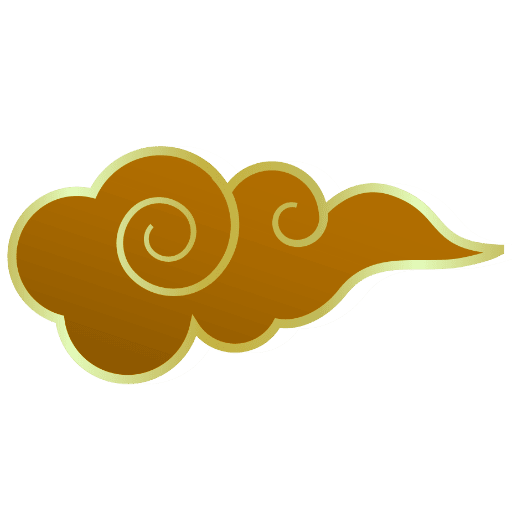How to Prepare Yourself for Training
Proper preparation is essential for getting the most out of your training and ensuring a safe, productive practice. The way you prepare your body and mind before class can significantly impact your ability to learn, your comfort during practice, and your overall progress in the arts. Here are some important guidelines to help you arrive ready to train effectively.
Nutrition and Timing
One of the most important aspects of preparation is managing your eating schedule around training times. It is crucial that you do not come to class on a full stomach. Eating a large meal shortly before practice can cause discomfort, sluggishness, and even nausea during training. The physical movements, breathing exercises, and internal work we do require your digestive system to not be heavily engaged in processing food. Ideally, you should finish any substantial meal at least two to three hours before class begins. If you need some energy closer to training time, a light snack such as a piece of fruit or a handful of nuts an hour before class is acceptable, but avoid anything heavy or difficult to digest.
Equally important is maintaining proper nutrition overall. Training in internal arts requires sustained energy and mental clarity, which come from eating well-balanced, nourishing meals regularly. Make sure you're getting adequate nutrition throughout the day so that you come to practice with stable energy levels rather than feeling depleted or running on empty. Hydration is also essential—drink plenty of water throughout the day, and bring water to class so you can stay hydrated during training.
Rest and Recovery
Sleep is another critical factor in your training preparation. Your body needs adequate rest to learn new movements, integrate training, and recover from the physical demands of practice. Try to get sufficient sleep the night before class so that you arrive alert and focused rather than tired and distracted. Chronic sleep deprivation undermines your ability to concentrate, slows your reflexes, and increases the risk of injury. Internal arts training requires mental presence and body awareness, both of which are significantly impaired when you're exhausted. Make sleep a priority as part of your overall training discipline.
Physical Preparation
Before coming to class, it's beneficial to do some light stretching or gentle movement to prepare your body. This doesn't need to be extensive, but spending even just five to ten minutes doing basic stretches helps warm up your muscles, increases flexibility, and reduces the risk of strain during training. Focus particularly on your legs, hips, back, and shoulders, as these areas are heavily engaged in our practice. Gentle joint rotations for your ankles, knees, hips, wrists, and shoulders can also help prepare your body for the range of motion required in training. This preliminary work helps you arrive ready to move rather than starting from a completely cold state.
Appropriate Clothing and Footwear
What you wear to training matters more than you might think. Choose pants or other lower body clothing that allows you to move freely without restriction. Your clothing should be comfortable and flexible enough to allow for a full range of motion in the hips, knees, and legs. Avoid anything too tight, restrictive, or with heavy seams that might dig in during stances or movements. Loose, comfortable athletic wear or traditional martial arts pants work well. Your upper body clothing should similarly allow freedom of movement in the shoulders and arms.
Footwear is particularly important for our practice. You should wear shoes with flat soles rather than cushioned athletic shoes with elevated heels or thick padding. Flat-soled shoes allow for better ankle mobility and stability, which are essential for proper stance work and balance. They enable you to feel the ground beneath you and develop the rooted connection that is fundamental to internal arts. The flat sole also promotes better alignment through your legs and spine. Martial arts shoes, minimalist sneakers, or simple canvas shoes with flat rubber soles are all good options. Avoid running shoes or cross-trainers with thick, cushioned heels, as these interfere with proper foot placement and energy flow.
Mental Preparation
Perhaps most importantly, prepare yourself mentally by cultivating an open mind and a receptive attitude. Internal arts training often challenges our habitual ways of moving and thinking. You may be asked to move in ways that feel unfamiliar or to focus on subtle aspects of practice that seem unimportant at first. Approach training with curiosity rather than judgment, and be willing to set aside preconceptions about what you think you know or how things should be done. Progress in these arts comes from patient observation, careful listening, and consistent practice rather than from forcing or trying to achieve results quickly.
Being open-minded also means being patient with yourself. Some aspects of training will come easily while others may take considerable time and effort to understand. This is completely normal. Everyone learns at their own pace, and comparing yourself to others is counterproductive. Come to class ready to focus on your own practice and development, accepting wherever you are in your journey. A humble, receptive attitude combined with sincere effort is the key to real progress.
No Hard Feelings
But I want you to know:
What that €18.99 actually does, because it's not just about watching videos.
Here's what your support actually funds:
- Over 1,200 video tutorials that I'm constantly adding to
- Live online classes where you can actually ask questions and get real-time corrections
- Weekly blog posts breaking down complex Daoist principles into understandable concepts
- Archiving work – documenting authentic methods before they get lost or commercialized beyond recognition
- Translation projects – making ancient principles accessible in modern language
- The technical infrastructure to deliver all this globally
Every month, that membership keeps the lights on for something that barely exists anywhere else
